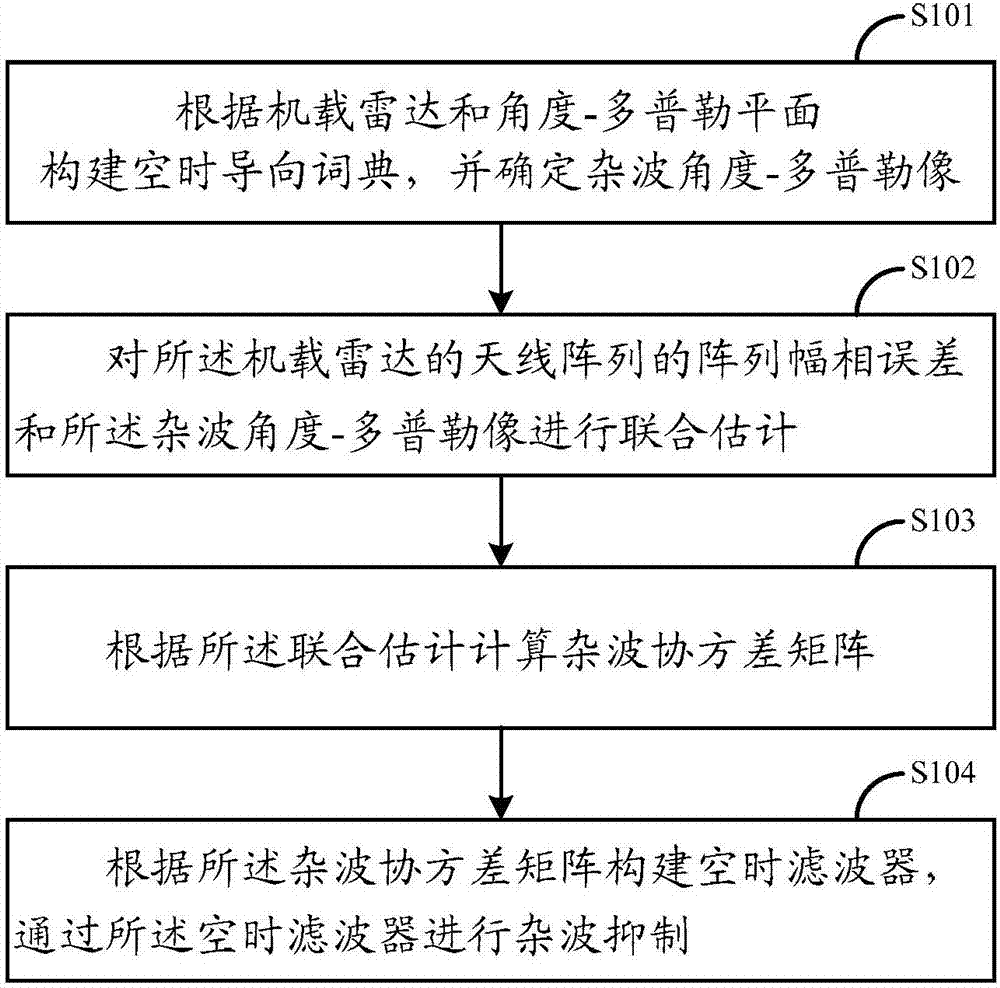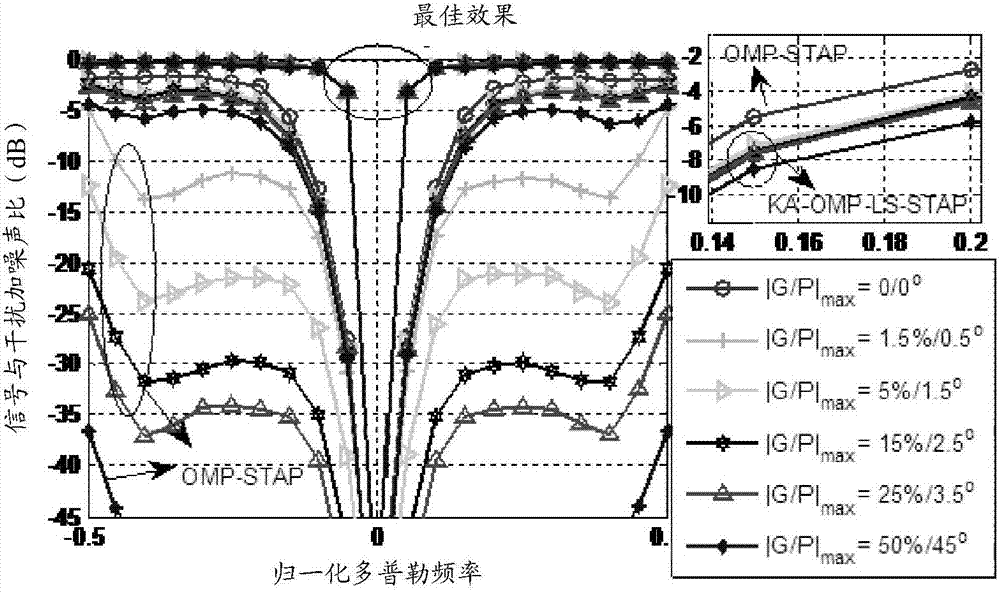Knowledge-based sparse recovery space-time adaptive processing method and system
A space-time adaptive and sparse recovery technology, applied in radio wave measurement systems, instruments, etc., can solve the problems of performance degradation, array errors, and high computational complexity, and achieve the effect of improving the level of clutter suppression and target detection.
- Summary
- Abstract
- Description
- Claims
- Application Information
AI Technical Summary
Problems solved by technology
Method used
Image
Examples
Embodiment Construction
[0057] In order to make the object, technical solution and advantages of the present invention clearer, the present invention will be further described in detail below in conjunction with the accompanying drawings and embodiments. It should be understood that the specific embodiments described here are only used to explain the present invention, not to limit the present invention.
[0058] figure 1 A space-time adaptive processing method for knowledge-based sparse recovery provided by an embodiment of the present invention is shown, including:
[0059] S101, constructing a space-time guidance dictionary according to the airborne radar and the angle-Doppler plane, and determining the clutter angle-Doppler image according to the space-time guidance dictionary;
[0060] S102. Jointly estimate the array phase error of the antenna array of the airborne radar and the clutter angle-Doppler image. In this step, the values obtained after joint estimation are array amplitude and pha...
PUM
 Login to View More
Login to View More Abstract
Description
Claims
Application Information
 Login to View More
Login to View More - R&D
- Intellectual Property
- Life Sciences
- Materials
- Tech Scout
- Unparalleled Data Quality
- Higher Quality Content
- 60% Fewer Hallucinations
Browse by: Latest US Patents, China's latest patents, Technical Efficacy Thesaurus, Application Domain, Technology Topic, Popular Technical Reports.
© 2025 PatSnap. All rights reserved.Legal|Privacy policy|Modern Slavery Act Transparency Statement|Sitemap|About US| Contact US: help@patsnap.com



